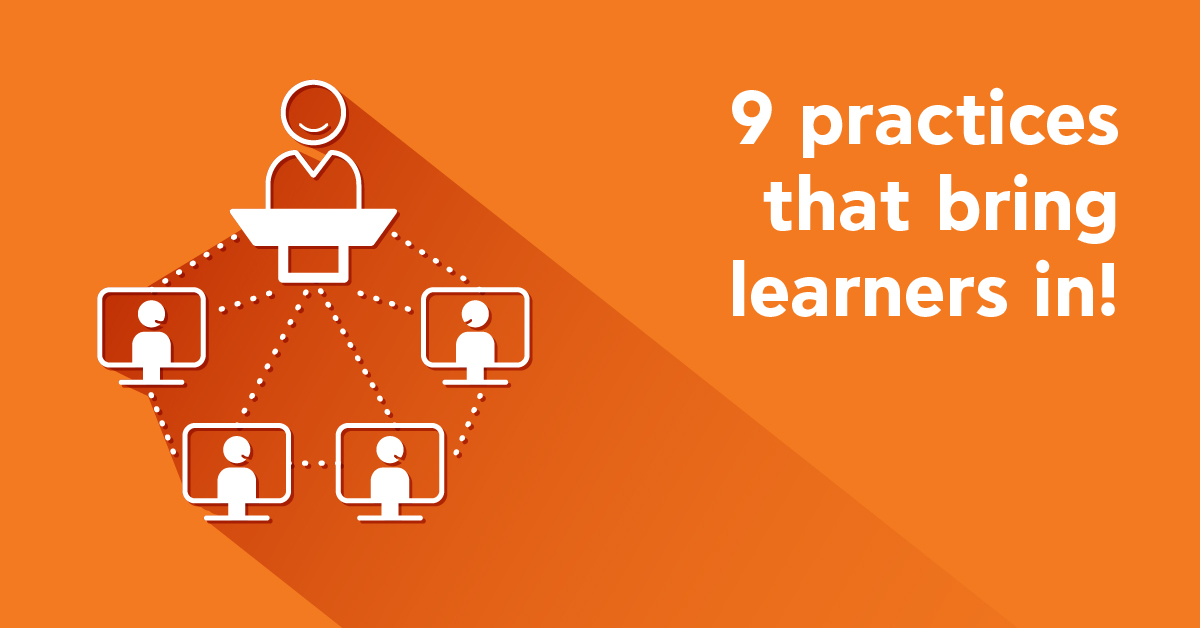Developing training for a limited number of learners with similar backgrounds is very different from developing an eLearning program for a widely dispersed audience with varying experiences, language and cultural backgrounds.
How do we tie the learners together to receive the eLearning course positively? In this article, we share some motivating tips for your learners.
You may have plenty of eLearning design and development tricks up your sleeve, but developing eLearning programs for large audiences can be challenging. Also, creating programs that catch problems is also required for massive audiences.
The problem in these types of learning programs is not only that the learners are unknown to you, the course facilitators are also foreign. You need to create a concrete and a self-sustaining eLearning course. The idea is to maximize learner participation and minimize course drop outs. How do we establish this degree of motivation?
Here are the tried and tested strategies that will motivate your geographically distributed learners:
1. Formative Assessment
Formative assessments are brief assessments interjected regularly after a couple of topics in a chapter. These help learners revise and recall facts learned up till the current point.
Allow your learners to communicate with the course facilitator at these formative assessment points. Short essay type reflections questions is also a great opportunity for the learner to receive feedback from the facilitator.
Integrating formative assessment points like these encourages your learners to be in touch with their facilitators, thereby removing the feeling of alienation and isolation.
For example, shorten a long topic by dividing content into five subtopics. Add mini-assessments after each subtopic. Then add a longer assessment at the end of the entire topic. This step will also help reduce drop outs.
2. Progress bars
We all love progress bars, especially when reading or learning a large volume of material. We want to know our current position in the material and how far we need to go. Colorful progress bars are very motivating to complete.
Learners stay on task and complete it to begin another one. Informing learners of how many more slides to go before they complete the session is also a good example of progress update.
3. Gamification
Gamification is no longer a new phenomenon. It has proven to be an excellent sales and marketing strategy.
Competing with peers is a part of human nature. Leaderboards, combined with a point system for successfully completing eLearning activities, increase the degree of participation and the will to compete.
Learning becomes a game and learners want to be a part of it. For example, assign unique badges to the leader, managers and guides in your eLearning course.
4. Badges
Role-based, achievement-based, performance-based and personality-based badges are very exciting for learners. Badges, when associated with points, become a potent recipe for extrinsic motivation.
Badges provide a sense of accomplishment and encouragement to take up the next challenge. Learners are willing to share their leaderboard ranks, their badges and their points on social media.
There you have it! Instant marketing for your eLearning across the globe! Badges make learners proud of their achievements.
Motivating learners has become increasingly challenging. Harnessing the attention of your learners for extended periods is only possible if your learning management system has several features that allow you to integrate these 4 motivating strategies.
Talk to our support team from your TalentLMS account to learn how to make these changes and get your eLearning course ready for global learning!
| Tags: eLearning Tips



